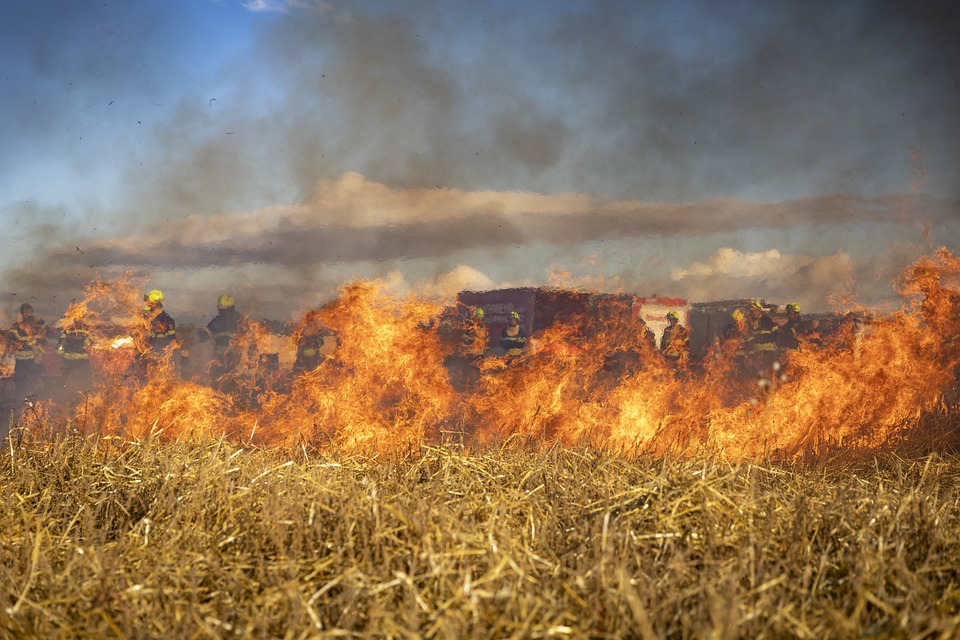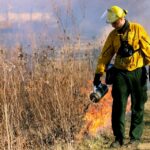California, known for its beautiful landscapes and diverse climates, is also prone to wildfires. These fires devastate communities, destroy homes, and significantly impact the environment. As wildfire seasons become longer and more intense due to climate change, it’s crucial to implement California wildfire prevention strategies. These strategies help reduce the frequency and severity of wildfires, ultimately protecting lives, property, and natural resources.
In this article, we will explore effective California wildfire prevention strategies that can be employed to reduce the risks and impact of wildfires. From community preparation to legislative measures, the state is actively working to ensure that the next wildfire season doesn’t come as a surprise.
1. Understanding the Importance of California Wildfire Prevention
Wildfires in California have become increasingly destructive in recent years. As one of the most fire-prone regions in the United States, it is essential to adopt comprehensive California wildfire prevention strategies. These strategies focus on mitigating risk, improving fire detection, and ensuring rapid responses to emerging threats.
According to data from the California Department of Forestry and Fire Protection (CAL FIRE), hundreds of thousands of acres burn every year. While it’s impossible to prevent all wildfires, these strategies can significantly reduce the risks. These strategies also involve better land management and the promotion of practices that make homes and buildings more fire-resistant.
2. Land Management and Vegetation Control
One of the most effective California wildfire prevention strategies is proactive land management. This includes clearing dry grass, brush, and trees that can serve as fuel for wildfires. These vegetation control measures help reduce the spread of fires, especially in rural and suburban areas.
For homeowners in fire-prone areas, defensible space is key. Defensible space is the area around a home where vegetation has been modified or removed to reduce the likelihood of a wildfire spreading to the home. Maintaining defensible space involves cutting back overgrown plants, pruning trees, and removing dead brush.
3. Fire-Resistant Landscaping
Using fire-resistant plants and materials in landscaping is another crucial California wildfire prevention strategy. Certain plants are less likely to catch fire, including succulents, rock gardens, and native plants that are adapted to the local environment. When landscaping for fire resistance, it’s essential to place plants strategically, ensuring that they do not serve as a continuous fuel source for fires.
Homeowners can also consider installing fire-resistant materials for roofing, siding, and decks to prevent embers from igniting their homes. These measures are critical in high-risk areas, especially where wildfires are frequent.
4. Fire Safety Education and Community Preparedness
Another important element in California wildfire prevention strategies is community education and preparedness. Local governments and fire departments often conduct outreach programs to educate residents about fire safety, evacuation routes, and emergency kits.
Preparing communities involves more than just knowledge—it also requires physical infrastructure to help prevent fires. For example, firebreaks, which are cleared areas devoid of vegetation, can slow down the spread of wildfires and give firefighters more time to contain them.
Additionally, regular community drills and emergency response exercises help residents practice evacuation procedures and stay calm in the event of a wildfire.
5. Building Fire-Resistant Infrastructure
As urban areas expand into rural and wildland-urban interface zones, building fire-resistant infrastructure becomes an increasingly vital California wildfire prevention strategy. Fire-resistant construction materials, such as fireproof windows, metal roofing, and concrete, help reduce the risk of buildings catching fire.
Additionally, implementing fire-safe building codes that require such materials is a proactive approach to wildfire prevention. These measures are especially important in high-density areas where many homes are close together.
Ensuring that communities are designed to withstand wildfires is an essential aspect of protecting life and property.
6. Fire Detection and Early Warning Systems
Advanced technology has improved fire detection and prevention in California. Automated weather stations, infrared sensors, and satellite imaging play a significant role in detecting fires early. Early detection is one of the most effective California wildfire prevention strategies, as it allows firefighters to respond quickly and contain fires before they spread.
In some areas, communities have installed fire alarms that are linked directly to local fire departments. These alarms can detect signs of fire in real-time, ensuring that authorities are alerted the moment a wildfire starts.
7. Legislative Actions and Funding for Fire Prevention
To address the growing concern of wildfires, California lawmakers have taken significant steps to support California wildfire prevention strategies through legislation. The state has passed laws that focus on improving fire safety, increasing funding for fire prevention programs, and expanding efforts to combat climate change, which contributes to longer and more intense wildfire seasons.
For example, the California Wildfire and Forest Resilience Action Plan, introduced in 2021, allocates billions of dollars to wildfire prevention and forest management. These funds are directed toward thinning forests, clearing brush, and ensuring that communities have the resources they need to build fire-resistant infrastructure.
8. Forest Management and Controlled Burns
Another essential California wildfire prevention strategy is forest management, which involves thinning forests and conducting controlled burns, also known as prescribed fires. These controlled burns are carefully planned and executed to reduce the amount of fuel in forests, making it less likely that a wildfire will spread uncontrollably.
While prescribed burns may seem counterintuitive, they are a proven way to reduce the intensity and frequency of wildfires. By eliminating excess vegetation, controlled burns create healthier forests that are less susceptible to catastrophic fires.
9. Improving Firefighting Resources
California’s fire departments are often stretched thin during peak wildfire seasons, making it crucial to invest in firefighting resources. Enhancing California wildfire prevention strategies involves ensuring that local fire departments have the equipment, training, and personnel needed to combat wildfires effectively.
The state is investing in advanced firefighting equipment, including helicopters and fire trucks designed specifically for wildfires. Additionally, creating mutual aid agreements between neighboring jurisdictions ensures that resources can be shared during peak wildfire seasons.
10. Climate Change Mitigation
As climate change continues to exacerbate the risk of wildfires, mitigating its effects is an essential California wildfire prevention strategy. California has set ambitious goals to reduce greenhouse gas emissions and transition to renewable energy sources. By addressing the root cause of climate change, the state aims to reduce the intensity and frequency of wildfires in the future.
Additionally, preserving natural ecosystems, such as wetlands and coastal marshes, can help sequester carbon and reduce the likelihood of devastating wildfires.
11. Public-Private Partnerships
Collaboration between the public and private sectors is another critical element of California wildfire prevention strategies. Private companies can play a significant role in providing resources, funding, and expertise to support wildfire prevention efforts.
For example, utilities in California have made efforts to upgrade their power lines to reduce the risk of fires caused by electrical equipment. These efforts have been supported by state policies and incentives, creating a stronger framework for wildfire prevention.
12. Personal Preparedness for Residents
While community-wide strategies are crucial, individual preparedness also plays a significant role in reducing the impact of wildfires. Homeowners in fire-prone areas should take responsibility for their properties by maintaining defensible space and installing fire-resistant materials.
Residents should also have a plan in place for evacuating in the event of a wildfire. This includes knowing multiple routes out of the area, having an emergency kit with essentials like water, food, and medications, and staying informed through local emergency channels.
Conclusion: A Unified Approach to California Wildfire Prevention Strategies
The challenge of preventing and managing wildfires in California requires a multifaceted approach. From land management and fire-resistant infrastructure to advanced technology and legislative support, California wildfire prevention strategies are working to create a safer environment for residents and communities.
By incorporating these strategies into local planning, improving fire safety education, and promoting sustainable land management practices, California can reduce the devastating impact of wildfires. It’s a collective effort—one that involves residents, governments, and private organizations working together to ensure that California’s wildfires are managed effectively, saving lives, property, and the environment.


